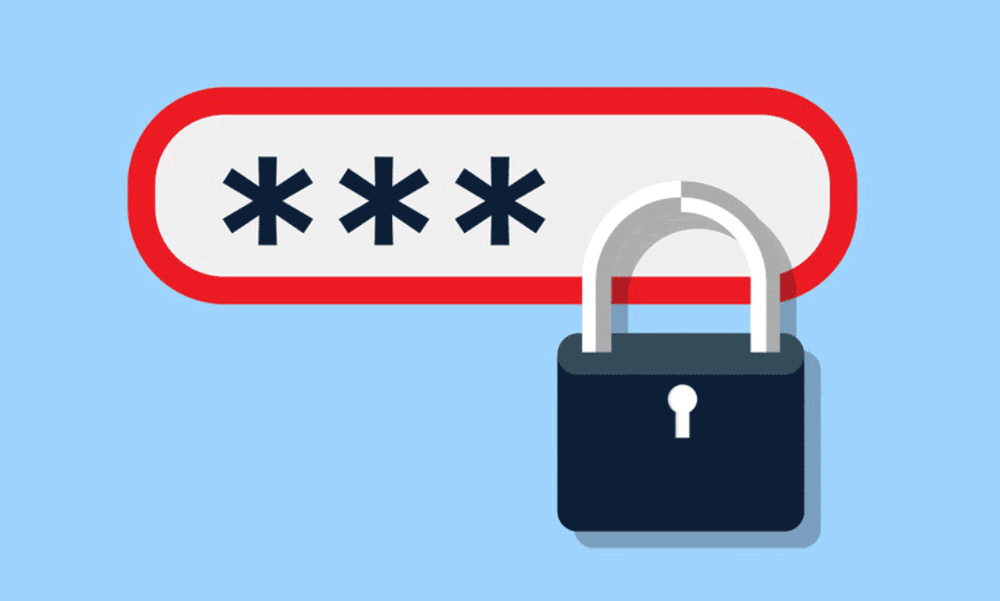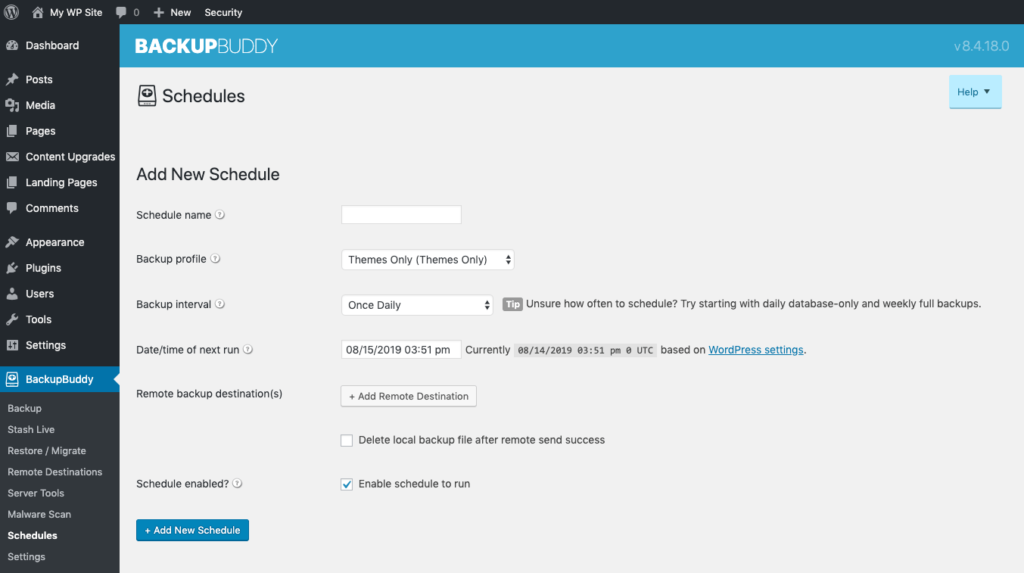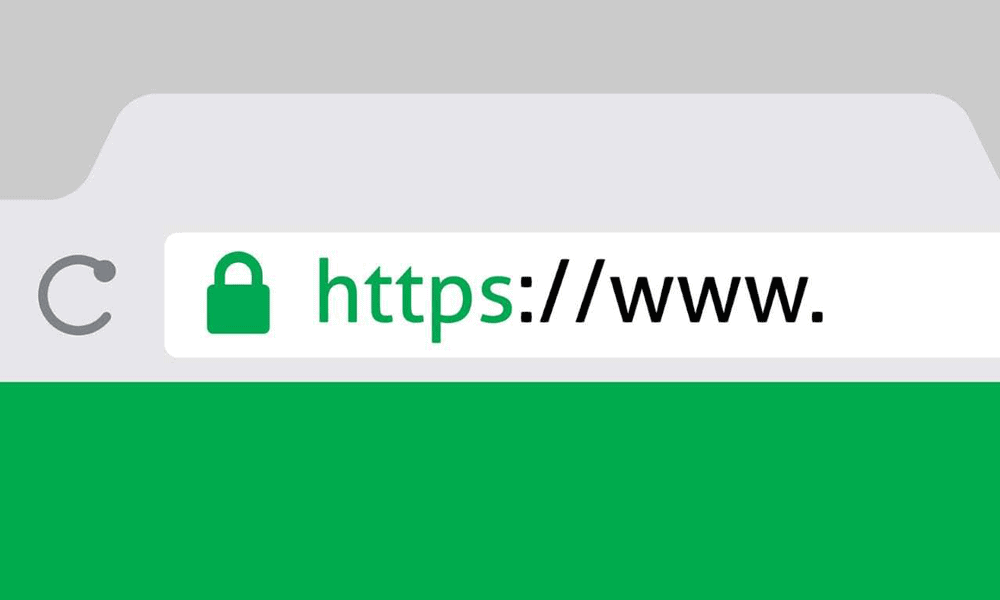How To Improve Website Security: Complete Guide To The Basics
Websites and other web applications face a continuous threat from cyber attackers, who may try to infiltrate them with malicious code to compromise their systems and steal sensitive information. Here are some tips to keep your website secure from malware.
In today's world, cybersecurity is not just about protecting your information from hackers but also from your employees. Most know the risks of leaving sensitive documents online or uploading confidential information onto an unsecured network. However, the truth is that many organisations fail to provide adequate training to staff on the risks associated with insecure and unsecured web applications, which can compromise the security of your data. This can lead to severe breaches, resulting in fines from regulators and hefty damages.
Website security is a crucial component of any business. After all, your website is often the first impression you make on potential clients. It also holds information about your business, which could expose it to cyberattacks. And it's easy to get complacent about website security.
But it doesn't have to be this way. With these essential website security tips, you can keep your website safe and secure.
Table of Contents
What is Website Security?

The term “Website Security” describes the measures to protect your online presence from unauthorised individuals accessing your website and stealing your confidential data. Although this might sound overwhelming, we have compiled a list of the top 5 website security threats and tips for securing your website.
Malware and Viruses
Malware is malicious software used to steal your data and information. There are two main categories of malware: Viruses and Trojans. These viruses are usually created by hackers, who sell them to make money. For instance, a hacker might use the virus to trick visitors into downloading a file that gives them access to your email, files, and other sensitive information. The hack could happen regularly or only once.
Viruses are usually designed to exploit operating system weaknesses, but Trojans are designed to steal user information. A Trojan horse is a program that is disguised as something else. When someone opens the attachment, they might think it is an email from a friend. Once the unsuspecting visitor opens it, the Trojan infects the computer and downloads it onto the user's hard drive.
Trojan viruses are dangerous because they can change settings, delete data, and even steal financial information. This is a massive problem for businesses, as this type of malware often gets passed along to customers through spam messages or infected attachments.
Phishing and Pharming Attacks
Phishing and pharming attacks are some of the most common website security threats. A hacker can disguise himself as a trustworthy organisation by creating fake emails, social media accounts, or phone numbers. These hackers use websites to steal passwords and personal data from users, sometimes without them realising it.
In recent years, phishing has evolved into a more complex method of cybercrime. Hackers are now using phishing scams to gather sensitive information such as bank account information and credit card details.
Pharming is a similar scheme that uses a website to steal users' personal information. The hacker creates a page that looks like a legitimate site. He then uses that page to steal your personal information and install malware on your computer.
Web Risks
Web risks can happen when you log in to your online banking account or check your online bill. This can result in the theft of your personal information, including your Social Security number. Using an original and safe password is the best way to avoid these risks.
Hacking or Password Attacks

The most common hacking or password attack happens when someone tries to guess your password. In this case, your password is usually weak and easy to break. If a hacker does break into your system, they may be able to download your personal information, such as your Social Security number.
Hackers can also use the information from hacked sites to get you to visit their websites. This is called a DDoS (distributed denial of service) attack. The hacker might use a bot to flood your server with traffic, causing it to slow down.
Unauthorised Access to Site
Hackers can access your website and take complete control of your site when your website is hacked. This means they can see your entire database, change your website's content, or delete your data. This is one of the biggest dangers of having a public website.
The most common way for hackers to access a website is by using the username and password combination. Hackers often create “password dumps”, listing all the usernames and passwords of compromised sites. This way, they can access your site quickly and easily.
Why You Should Be Concerned With Website Security
Anybody can become a victim of hacking. The main difference between you and a hacker is that a hacker doesn't care about whom they're stealing from.
Hackers can target individuals, organisations, businesses, government agencies, and friends. They could hack into your email, social media accounts, credit card and bank accounts. They could steal your identity, send spam, or blackmail you. In addition to compromising your privacy, a hacker can use your personal information for illegal activity such as identity theft, credit card fraud, or other financial crimes.
How Can a Hacker Access Your Website?
Your web browser is the first line of defence against hackers. If a website uses unsecured connections, your data can be intercepted and compromised before reaching its destination.
Most of the world's websites use HTTP (Hypertext Transfer Protocol), created in 1991. This standard is used by nearly every website you've visited in the past 30+ years. When you connect to a website, your web browser sends information as data packets to the website. These data packets contain the request for information, and your web browser receives responses from the website.
HTTPS (HTTP over Secure Sockets Layer) encrypts your information using a complex algorithm that scrambles it into an encrypted state. Hackers need to intercept the encrypted traffic to decrypt and view your data.
Why Websites Get Hacked
Hackers use many different methods to hack websites, but here are some common examples:
- Brute force: A hacker uses a program to try thousands of passwords until they find one that works.
- Password guessing: A hacker uses a program to guess the login credentials of a person trying to access a website.
- Social engineering: A hacker tricks a user into giving up information, such as a username or password, by posing as someone they know or asking for information elsewhere.
- Virus: A hacker spreads a malicious software program that takes over the computer and forces the user to do something terrible, such as stealing money or divulging personal information.
- Outdated software: An outdated piece of software is vulnerable to hackers.
A Website Is Vulnerable to Hacking
Website vulnerabilities are similar to a door that is unlocked. If the door is open, anyone can enter the room, even though the door is locked. Similarly, a website is vulnerable if the owner has allowed access by providing a username and password.
There are many different types of security bugs and mistakes that can expose a website to a hacker. For example, a bug in a website's software might allow a hacker to use a login name and password to gain access to a server. A hacker can also exploit a website's software by manipulating a configuration file, which controls how the software operates.
A hacker can also use other vulnerabilities to gain access to a website. For example, the server could be attacked by a denial of service (DoS) attack, which involves flooding a website with requests, making it slow to respond. Another example is a vulnerability in a website's software that allows an attacker to take control of the computer, forcing it to perform specific actions.
Website Vulnerabilities & Threats
A website's security and privacy are often compromised through a combination of vulnerabilities and threats. Many common threats require essential remediation, but others can cause severe problems for your business or home. This section will examine protecting your company and data from these threats.
These are potential weaknesses that attackers can exploit to gain access to your website and potentially to your users' information. They are typically present in your web pages, either through unpatched software on your server or poor coding practices that leave your site open to attack.
Malware
Malicious software or malware is any program or files that attempts to infiltrate, compromise, destroy or otherwise harm your computer. It can come in many forms, including viruses, worms, trojan horses, adware and spyware.
Web Browser Exploits
These are vulnerabilities in the browsers you use on your desktop, laptop or mobile device. Most web browsers have several features and settings that protect users from malicious websites. Some websites intentionally exploit browser vulnerabilities to access your personal information and track your activity.
Denial-of-service attacks
These involve a cyber attack designed to slow down or stop a website. For example, an attacker could send millions of emails to your users in a single day, causing your servers to slow to a crawl. This attack is often called a distributed denial-of-service (DDOS) attack.
Spear Phishing
This email appears to be from a legitimate organisation but comes from a scammer or hacker who wants to trick you into giving away confidential information. It's similar to phishing but much more targeted and personalised. Spear phishing is designed to get you to click on a link or take some other action, like entering your password or clicking on a malicious link, which gives the attacker access to your account.
Social Engineering
An attacker may be able to trick your employees, customers or partners into giving away information or otherwise compromising their security. An excellent example of social engineering is a phishing attack.
Man-in-the-middle
Also known as a MiTM or MITM, attackers use this technique to intercept your web traffic, either to see what you're up to or to monitor your activities and steal your information.
Phishing
In a phishing attack, hackers send out fake emails that impersonate a trusted source to trick you into providing your login credentials or clicking on a malicious link.
Botnets
A botnet is a network of computers controlled by an attacker that allows the attacker to perform many actions, like sending spam or launching DDOS attacks.
Spam
Regarding spam, there are two types: unsolicited commercial email (UCE) and bulk unsolicited email (BUE). UCE is the type of spam we all receive, and BUE is the type businesses must deal with daily.
Ransomware
This is when attackers demand payment in exchange for your files or for you to hand over your login information. The most popular form of ransomware is CryptoLocker.
Remote Code Execution
This is where a hacker can upload malicious code to your website, which they can then use to take control of your computer or steal your data.
Malicious Javascript
This script runs in the background of your browser, which is usually hidden from view. Hackers can embed code in their Javascript designed to steal information or take control of your computer.
Man-in-the-browser
Hackers can also hide within your browser, meaning they're no longer on your computer or the network. They're effectively in your browser and have full access to your system.
How to Protect Your Website & Maintain Security

Security threats are on the rise. Hackers are targeting websites to gain access to user accounts and steal information from them. For example, they may download your entire database, take over your website, or install malicious software.
In the past, it was relatively easy for hackers to find and exploit your website's vulnerabilities. However, thanks to the increasing popularity of HTTPS and other web security technologies, most security threats are detected before they can reach your site.
When securing your website, it's essential to research and choose a solution that will protect you from today's most common security threats. Below are some tips to help you do that.
Choose a hosting service with high-security standards
Generally, companies offering a lower level of website security are less trustworthy. A hacker could compromise your site relatively easily if your website is hosted on a server with low-security standards.
To avoid this, you should look for a hosting company with robust encryption protocols, strict server maintenance, and a dedicated team that monitors your site daily.
Implement HTTPS for maximum protection.
HTTPS stands for Hypertext Transfer Protocol Secure and is one of today's most widely used secure communication protocols. An HTTPS connection encrypts the data you send and receive, making it almost impossible to intercept or decode without the proper tools.
WordPress sites are default configured with HTTP connections, but you can change that to HTTPS connections to ensure maximum protection.
Use a robust password manager.
Most online services offer password-management features. These services create unique, random passwords for you, saving them on your device for easy access. Some services even allow multiple devices linked to the same account.
While this may seem convenient, storing your password on your device is not advisable. The safest way to manage your passwords is to have them in a password manager.
The best way to store your website's passwords is to use a secure password manager that stores them securely and doesn't share your login information with third-party websites or applications. Here are some of the best password managers:
- LastPass
- 1Password
- Dashlane

Monitor your website for attacks and respond accordingly
Once your website is online, you should monitor it regularly to ensure no threats exist. This means checking your site's server logs frequently and responding to any threats quickly.
When your site gets hacked, the hacker may try to delete or damage your files. You should be able to recover from these problems fairly quickly, but you don't want to wait until it's too late.
Keep your plugins updated and secure.
Plugins are a great way to add functionality to your website, but they also expose you to various security risks. In the case of WordPress, attackers can install a plugin and then use it to install malware on your site.
The best way to protect yourself is to update all your plugins regularly and ensure they use secure code. Learn more about updating WordPress plugins.
Check your site regularly for updates.
You should always check your website for updates. Doing so lets you identify and fix potential security threats before they affect your site. You can also check for updates from your hosting company and domain name registrar.
Secure your data in case of a breach.
It's essential to keep your site's data safe and secure. That means creating strong passwords and keeping them safe from hackers. It also means storing your login information in a password manager and only accessing your website via the HTTPS protocol.
This way, if your site gets hacked, you can recover it quickly. Please read our guide on how to recover from a breach.
Limit User Access & Permissions
Limiting permissions to users and groups reduces the potential damage someone could do while accessing your site. Your website defaults permit users to create, edit, delete or manage files or folders. This allows everyone to do things that they would typically be able to do.
Permissions may also include permission to upload files. If you do not have limited user access, this can be a huge problem, especially if you are a hosting company where you can't tell if files are malicious. We recommend limiting user access and permissions to prevent security breaches.
You can manage permissions using a unique access control panel in the Site Administrator role. When you restrict access to a specific group or individual user, you can manage their access to different website areas.
To secure your website, you can use a few simple steps:
- Create groups for different categories of users and set each group's rights.
- Change the default user permissions and add new users to groups.
- When you change a user's permissions, they cannot see their settings.
Have Website Backups

While it may seem obvious, website backups are essential to protecting yourself and your customers. Backups are essential for two reasons.
First, they help ensure your website remains active and available if your site crashes. If you lose power or your server crashes, your website is no longer accessible to visitors. If you're working on a website that offers sensitive customer data, losing access to it could be a real problem.
Second, backups are essential to protect your website if something happens to it. If your site experiences downtime and you've backed up your files, you can restore it to its pre-crash state.
Is one website better than the other when it comes to website backup?
The answer is… it depends. While one backup method may be superior to another, none is perfect. So, which one is best?
Let's take a look at the pros and cons of each.
Backing Up Using FTP
Web hosting services such as WP-Engine, Siteground, Kinsta, Hostgator, Krystal, etc., typically allow you to back up your website using a “File Transfer Protocol” (FTP) feature. This allows you to upload your website files to a server via the internet and copy them back to your computer.
Pros: FTP is the simplest method to perform a backup. The most significant advantage to using FTP is that you can typically do the backup directly from your web hosting provider's control panel.
Cons: FTP is often considered a low-tech solution and can sometimes be challenging to use. FTP is not secure, so it's not recommended for storing private or sensitive data.
Using a Program Like Updraft Plus
Updraft Plus is an online backup plugin that automatically backs up your website every few hours. The good thing is that there's not much setup required. All you need to do is create an account with the company and decide how long you want your backup to last.
Pros: Updraft is the most user-friendly option available, and it's quick and easy to set up.
Cons: If your internet connection goes down or there's a power outage, your backups will stop. Also, the plugin is only compatible with WordPress, and some other programs may be incompatible.
Install an SSL Certificate

SSL (Secure Sockets Layer) certificates enable users to confirm that your website is secure and valid. Without an SSL certificate, users cannot confirm the authenticity of your website or its contents. SSL certificates are required to protect your site from hackers and cybercriminals.
Why is SSL Important?
When users enter personal or payment information on your website, SSL helps protect that data from being stolen by cybercriminals. Hackers often try to steal credit card numbers, usernames, passwords, and bank account information. When they do, they are usually successful because the hacker doesn't have to type in any of this information. Instead, the hacker can access the same information via a keystroke logger or another method.
SSL protects information from these types of attacks. Users can't see the sensitive information but can see the URL address in their browser bar. The address indicates that the website is secure and that they can trust the information they are entering on your website.
Get a Website Firewall
A firewall is typically divided into content filtering, application control, and intrusion prevention. Content filtering includes virus scanning, spam filtering, and URL filtering. Application control blocks the transmission of applications and downloads. Intrusion prevention stops malicious attacks and unauthorised connections.
Content Filtering
Content filtering is the core feature of any web firewall. It screens and filters out malicious attachments, downloads, and websites to prevent them from infecting your computer or the network. It also detects and stops suspicious activity, including phishing attempts, malicious code, and inappropriate content.
Application Control
When you access a website or an email, your web browser requests a webpage or an email message. Your web browser then transmits a copy of the webpage or email to your system. As part of the process, it runs a program called an application.
Your firewall scans the contents of this program to identify malicious code and prevent it from harming your system or your network. It can also block unwanted programs, including those used for spamming, distributing malware, or monitoring your online activities.
Intrusion Prevention
Intrusion prevention is similar to application control in that it monitors your requests for information. However, intrusion prevention goes one step further by identifying malicious activity on your system and blocking it.
Malicious software is often distributed through malicious web pages, emails, or attachments. An intruder may also steal data or attempt to control your system.
Use a Website Security Service

While website security is an extensive topic, there are several reasons why you should consider using a website security service provider to protect your site.
In today's digital age, more and more users are turning to the web to research and shop online. You could lose thousands of dollars in potential sales if your site is compromised. If you don't have a site security service to safeguard your site, you may invite hackers to exploit and steal your customers.
How Can Website Security Services Help Protect My Site?
There are many ways that a website security service can help protect your site. First, it's critical to understand how hackers operate. Hackers can hack into your site using various methods, including weak passwords, outdated software, and unsecured payment systems. A website security service can detect and block threats before they compromise your site.
As a business owner, you rely on your site for marketing and customer relationships. By keeping your site secure, you can prevent any loss of revenue. It's essential to have a website security service provider protecting your site and protecting you from hackers.
While the internet is a valuable resource for many, it's also a prime hunting ground for hackers. If a website security service doesn't protect your site, you can lose your site to hackers. Visit our website security blog to learn more about website security and how to protect your site.
Conclusion
Website security is essential, but there's no reason to panic. While the bad guys constantly evolve their tactics, they are often slow-moving and not very sophisticated.
They may target you because you're in a particular industry, operating a popular website, or have a large following. But they're also likely after bigger fish, and they know you can't afford to ignore security problems.
The good news is that you can protect your site and customers against the most common threats.
I hope you enjoyed this post and found it helpful! If you have any questions, please leave them in the comments below.
Website Security FAQs
What are the most common security holes found in websites?
The most common security hole found in websites is using weak or outdated passwords. It would be best if you never reuse passwords, and it's always a good idea to use a password manager to keep track of your passwords.
How can I prevent hackers from breaking into my website?
Hackers can break into your website if they know how to do it. They can break into your website if you have weak passwords, and they can also break into your website if you have outdated software.
Are there any ways to improve the security of my website?
You can improve the security of your website by making sure that your website is updated, using strong passwords, and using a good password manager.
What are the best practices for keeping websites secure?
The best practice for keeping your website secure is updating your software and plugins regularly and ensuring that your website is encrypted.
